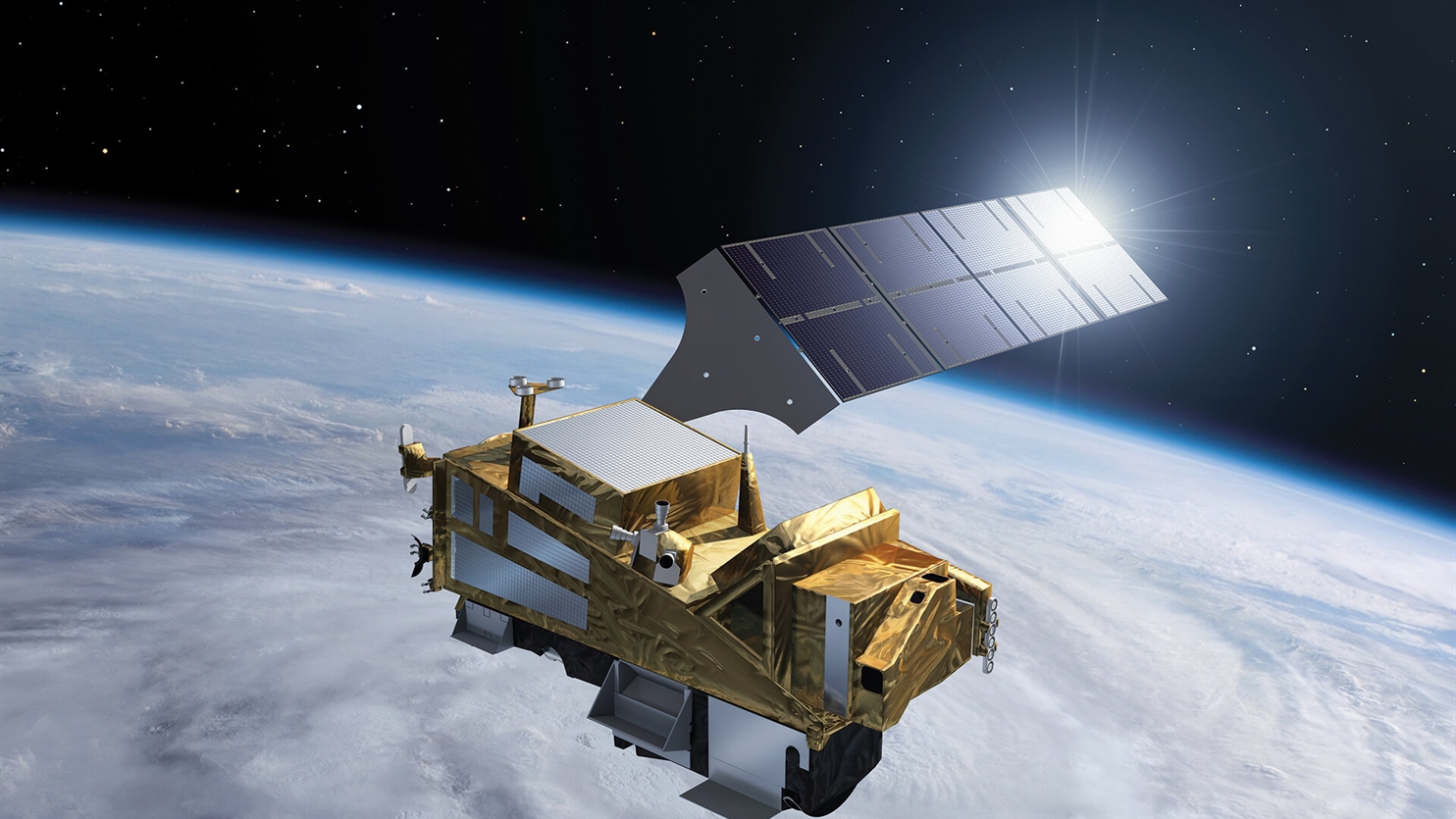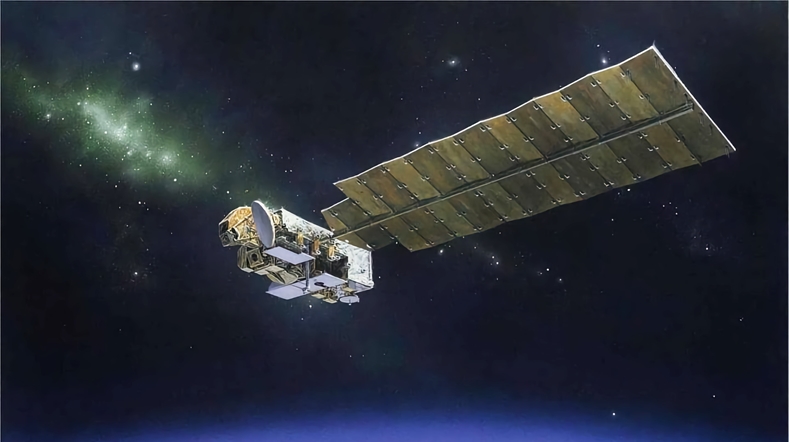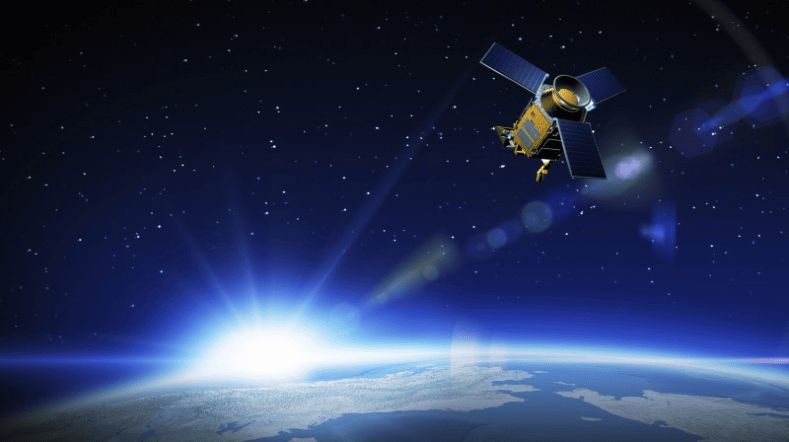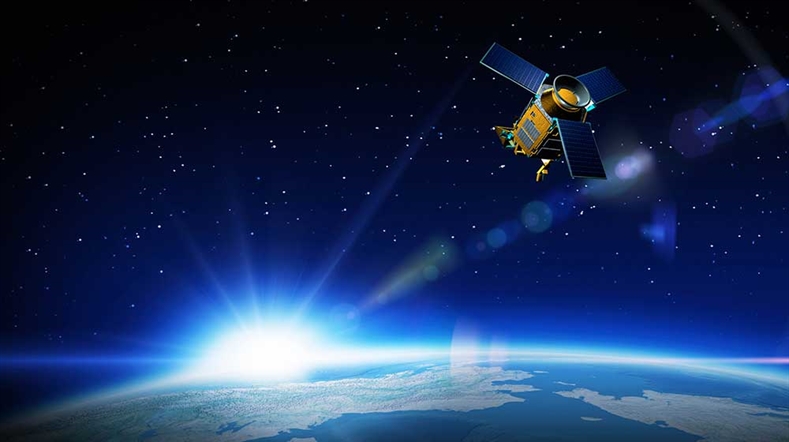
TNO’s contribution to Sentinel-5
Effective environment and climate action requires effective decision-making. And that begins with consistent, accurate data on air pollution and atmospheric composition – climate interaction. TNO is proud to contribute to the next generation of satellites, which will provide daily global measurement data about air quality and atmospheric composition – climate interaction measuring species like Ozone, Nitrogen dioxide, Sulfur dioxide, Fomaldehyde, Glyoxal, aerosols, Carbon monoxide and the greenhouse gas Methane for the coming 21 years or more.
As part of the Copernicus Atmosphere Monitoring Service (CAMS), the European Space Agency (ESA) is deploying a series of Sentinel satellites to monitor the earth in several ways. From monitoring vegetation, soil and water cover to measuring sea-surface topology to tracking greenhouse gas emissions and air pollution. Data collected by the satellites is made publicly available, and is used to make decisive, data-driven decisions, manage the environment and understand and mitigate climate change. The Sentinel-5 project, led by Airbus Defence & Space GmbH, aims to ensure the most accurate atmospheric composition measurements to date.
The Sentinel-5 Precursor (Sentinel-5P), which was launched in 2017, carries the TROPOMI instrument, which has already made a significant contribution to our understanding of atmospheric composition – climate interaction and air pollution. The ground-breaking TROPOMI instrument was conceived and designed at TNO. We then worked closely with Dutch and UK partners to build the instrument. Today, Airbus Defence and Space GmbH has once again called on TNO and our partners to ensure that Sentinel-5 delivers clear, consistent data for the coming 21 years.
Sentinel-5
Next-generation knowledge
In the years since Sentinel-5P was launched, free-form optics technology –and TNO’s expertise in it – has continued to grow. So, when called upon to contribute a spectrometer for the UV1 wavelength range (270-310 nm) and two extremely high-resolution optical telescopes for Sentinel 5, we put all of our knowledge and expertise to work. Since each Sentinel satellite has an average mission lifetime of seven years, we are developing each instrument in triplicate – ensuring that data will continue to flow for the next 21 years.
Once again, TNO worked to ensure that the compact equipment was as light as possible, and yet robust enough to withstand forces 22 times stronger than gravity during launch, and also the harsh environment of space, including temperatures ranging from -20 to 60° Celsius. All of the instruments’ materials were selected and designed for extremely low outgassing – meaning less degradation over time and a longer overall mission lifetime.
Unique and revolutionary upgrades
The instruments designed by TNO not only meet the precise specifications required by ESA and Airbus, but also include some unprecedented technological advancements that will ensure the clearest, most accurate measurements possible. The UV1 spectrometer, for example, must scan the atmosphere in the Ultraviolet spectrum, which contains the least amount of light compared to the visible and infrared spectrums. Any disruption or loss of light can hinder the instrument’s performance. So, the Sentinel-5 spectrometer was designed with reflective mirrors that are smoothly polished to surface roughness less than 0.7 nanometres. This reduces disruption from stray light sources. The mirrors are also mounted on mechanical ‘springs’ to withstand higher levels of vibration and shock.
The two telescopes for Sentinel-5 are unique in themselves. They need to be co-aligned, which requires extreme accuracy. What’s more, the telescopes once again use nanometre-smooth, reflective mirrors instead of lenses, further reducing loss of light and ensuring clear resolution, as well as ‘clean’ readings that aren’t subject to dust or residue collection.
Both telescopes designed by TNO for Sentinel-5 also include slit homogenisers, which mitigates slit heterogenous illumination due to the non-uniformity of the observed albedo – light reflecting off the Earth. Every previous instrument of this type experienced challenges due to this non-uniformity of albedo.
Preparation for the future
TNO is eager to continue working on innovations that bring essential atmospheric data into razor-sharp focus in order to support science and policy for preventing air pollution, global warming and a loss of biodiversity. Our contribution to Sentinel-5 is yet another proud moment for the team, and another opportunity to enable better-informed decisions that benefit society.

Sentinel-5 will scan the entire surface of the Earth every 24 hours, and offer effective data about air quality. It will accurately measure:
· Carbon monoxide
· Methane
· Ozone
· Nitrogen dioxide
· Sulphur dioxide
· Formaldehyde
Sentinel-5 will continue the revolutionary work of Sentinel-5P and open up opportunities for complementary services that not only improve air quality, but also create economic opportunities.
Get inspired
Satellite instrument OMI orbits Earth for 100,000th time


TNO’s view of 2030: Getting a grip on climate change from space


TNO Prepares to Build Breakthrough Emissions Monitor

Knowledge institutes join forces to research climate change and air pollution using satellites


Satellite reveals higher methane emissions Australian coal mines


